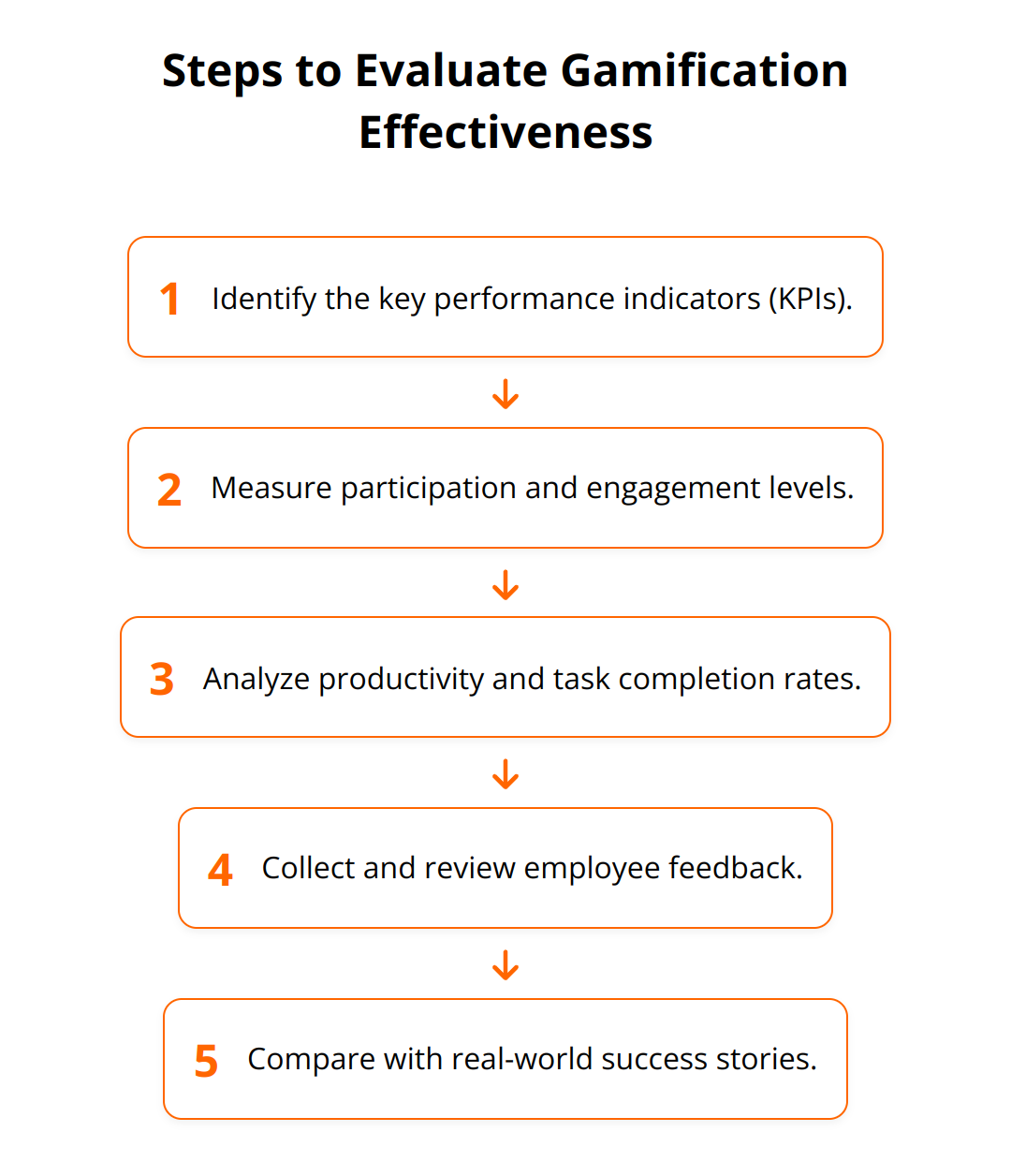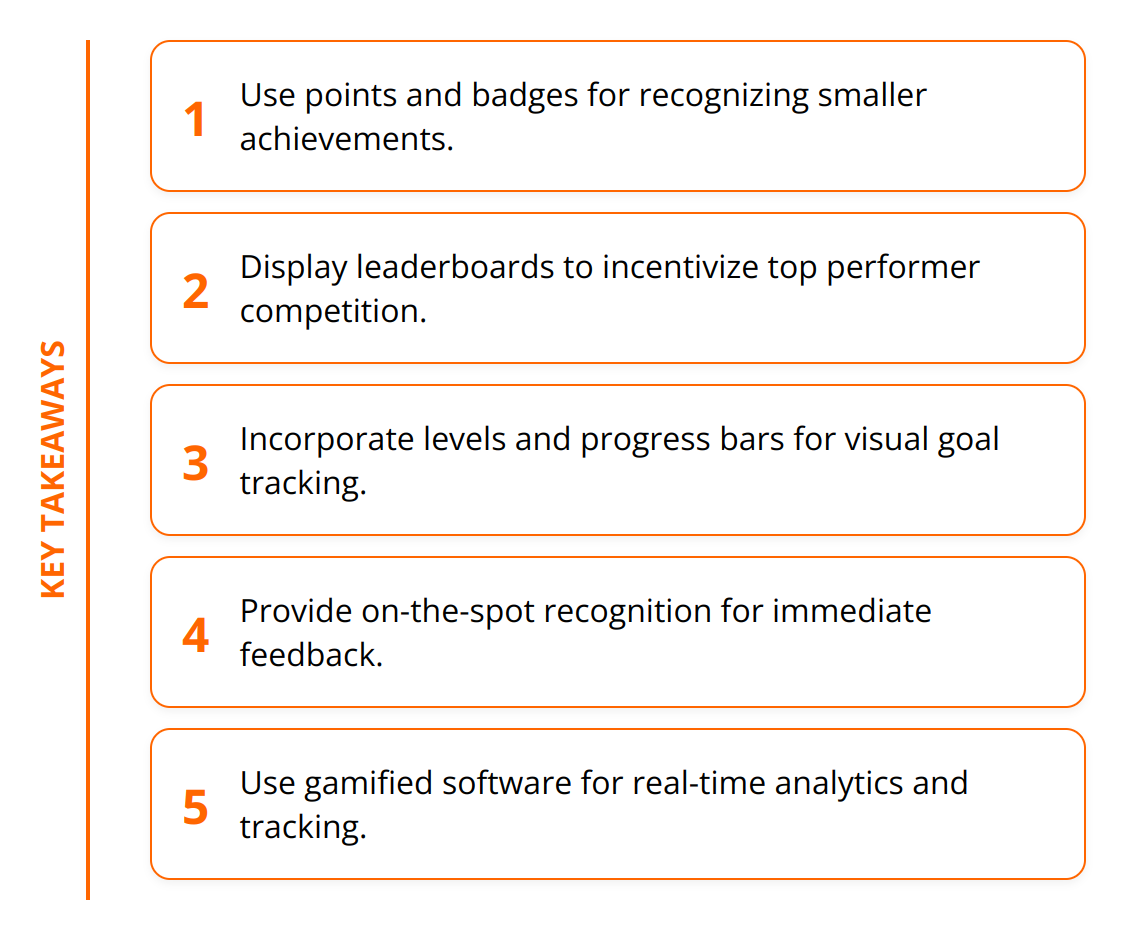
Gamification is transforming how companies engage and motivate their employees. By incorporating game-like elements into reward systems, businesses can boost productivity and satisfaction.
We at Reward the World believe that understanding and implementing gamification can lead to impressive results. Join us in this post: “How to Use Gamification in Employee Rewards” as we explore the key aspects of gamifying employee rewards.
What Is Gamification in Employee Rewards?
Gamification is reshaping how organizations incentivize and engage their workforce. At its core, gamification brings game-like elements such as points, badges, leaderboards, and levels into employee reward systems. These elements are not just playful add-ons but powerful tools to drive employee motivation and performance.
Defining Gamification and Key Concepts
To understand gamification, it’s essential to grasp its foundational concepts. Gamification involves using game mechanics—structured rules and feedback systems—in non-game contexts to motivate participation and engagement. This approach isn’t about turning work into games but about making work more engaging through game dynamics.

Importance of Gamification in Employee Engagement
Traditional reward systems often fall short in keeping employees motivated. Gamification addresses this gap by tapping into the intrinsic motivations of employees. According to a survey, about 87% of U.S. workers believe that gamification can enhance their productivity and motivation. Furthermore, integrating game mechanics into everyday tasks can lead to a 50% increase in productivity and a 60% rise in engagement. This data underscores the tangible benefits of gamification in driving employee satisfaction and business outcomes.
Overview of Popular Gamification Techniques
Numerous techniques can be seamlessly integrated into employee reward systems to maximize engagement and productivity. Here are some of the most effective ones:
- Points and Badges: Awarding points and badges for completing tasks or achieving milestones can create a sense of accomplishment and recognition. This technique also fosters healthy competition among employees.
- Leaderboards: Displaying leaderboards in common areas or on digital platforms can highlight top performers and encourage others to improve their standings.
- Levels and Progress Bars: Implementing levels and progress bars allows employees to visualize their growth and the steps needed to achieve their goals. It adds a sense of progression and attainment.
- On-the-Spot Recognition: Providing immediate rewards for exceptional performance keeps motivation levels high. Intermittent rewards have been shown to boost engagement significantly.
- Spin-to-Win Bonuses: These random, game-like rewards add a fun element to productivity tasks and create anticipation and excitement among employees.
- Goal-Tracking Tools: Progress bars and visual goal tracking tools can be highly effective in maintaining focus and direction.

To see gamification theories applied, companies can turn to real-world examples like Moët Hennessy, which successfully used gamification to foster creativity and engagement among its staff. Exploring these real-world implementations provides practical insights into how to make gamification a winning strategy in your workplace.
How to Implement Gamification in Employee Rewards Programs
Implementing gamification in employee rewards programs begins with setting clear objectives and goals. Defining what success looks like for your organization is essential. Whether it’s increasing productivity, enhancing training, or boosting employee satisfaction, clearly stated goals will guide the entire process.
Next, selecting the right gamification mechanics matters. Not all game elements will fit every organization or goal. Points and badges can be effective for recognizing smaller achievements. Leaderboards can stimulate competition, but they might also demotivate lower-ranked employees if not handled with care. On-the-spot recognition provides immediate feedback and has been shown to raise engagement by 48%.
Technology plays a crucial role in smoothly integrating these elements. Using platforms that support gamification features is key. Real-time analytics, progress tracking, and seamless interfaces are vital for successful implementation. Numerous software options now exist to help visualize performance and track points accurately.
Practical Tips:
- Set measurable goals: Aim for specific targets like a 20% increase in training completion rates or a 15% boost in sales.
- Mix game mechanics to keep engagement high: Use points for daily tasks and leaderboards for quarterly goals.
- Use technology for automation: Platforms like gamified online training software offer real-time data and deliver insights into employee progress.

By focusing on these actionable steps, organizations can create a dynamic and engaging rewards program that drives meaningful results. Expanding on these strategies, you can learn more about gamification techniques that fit your specific needs.
In addition, keep up with evolving trends and stay informed about the latest advancements in gamification to continually improve your reward programs. AI and IoT are already creating more sophisticated and immersive experiences, enhancing the effectiveness of gamified solutions in various sectors.
How to Measure the Effectiveness of Gamification
To truly harness the power of gamification in employee reward programs, measurement is essential. Effective evaluation involves tracking key performance indicators (KPIs), analyzing employee feedback, and learning from real-world success stories.
Key Metrics to Track
The first step in assessing the effectiveness is identifying the right KPIs. Here are some fundamental metrics to keep an eye on:
- Engagement Levels: Measure participation rates, time spent on gamified tasks, and employee interaction with gamification features.
- Productivity Metrics: Assess improvements in sales figures, task completion rates, or project timelines.
- Training Completion: Track the percentage of employees completing training modules and their scores.
- Employee Retention and Turnover: Quantify the impact on employee retention rates and the decrease in turnover.
- Feedback Scores and Satisfaction: Use surveys to gauge employee satisfaction with the gamified system and their overall job satisfaction.

Analyzing Employee Feedback
Collecting and analyzing feedback is crucial. Employees are at the heart of gamification, and their input provides invaluable insights:
- Surveys and Polls: Regularly distribute short, focused surveys to understand what employees think about specific game mechanics.
- Focus Groups: Conduct focus groups for deeper discussions on what elements are working and which need improvement.
- One-on-One Interviews: Personal interviews with top performers and those less engaged can reveal nuanced insights.
Practical Tips:
- Use anonymous feedback to gather honest insights.
- Incorporate regular updates and act on feedback to show employees their opinions matter.
- Track open-ended responses for qualitative data that numbers can’t capture.
Case Studies of Successful Implementations
Learning from companies that have successfully implemented gamification can provide actionable lessons:
- SAP used gamification to revolutionize its sales training, leading to a 200% increase in course completion rates and a 20% increase in employee engagement.
- Ford introduced a gamified app for training its sales team, resulting in a 417% increase in engagement and a significant boost in sales.
- Another notable example is Moët Hennessy which saw remarkable improvements in creativity and employee engagement through gamified initiatives.
Key Takeaways:
- Personalization: Success stories often involve tailored gamification elements that resonate with the specific workforce.
- Technology Integration: Smooth and efficient technology implementation is critical in measuring and refining gamified reward systems.
- Sustained Effort: Continuous effort and adaptation are essential for long-term success.
By focusing on these areas, businesses can ensure that their gamified reward systems are not only engaging but also effective in achieving desired outcomes.
Conclusion
Gamification offers several benefits when integrated into employee rewards programs. It significantly boosts engagement, with research indicating a 60% rise in employee engagement and a 50% increase in productivity. It also enhances motivation by offering immediate recognition and fostering a sense of competition and accomplishment. These advantages contribute to improved employee satisfaction and better overall business outcomes.

However, there are challenges to consider. Not all game mechanics fit every organization. Poorly designed leaderboards, for instance, can demotivate employees. Selecting the right elements and ensuring they align with your organizational culture is crucial. Technology integration is also vital yet complex, requiring platforms that offer real-time analytics and seamless interfaces. Consistent evaluation and adaptation are necessary to overcome these challenges and make gamification effective.
Despite these hurdles, the potential benefits make it worth experimenting with gamification strategies. By leveraging proven techniques such as points, badges, and on-the-spot recognition, companies can foster a more engaged and productive workforce. Platforms like Reward the World offer solutions tailored to these needs, providing instant rewards and robust analytics to refine your approach.
Experimenting with gamification can revolutionize your employee rewards program. To explore more about how you can leverage gamification in your organization, visit Reward the World for innovative solutions that drive engagement and enhance performance.
